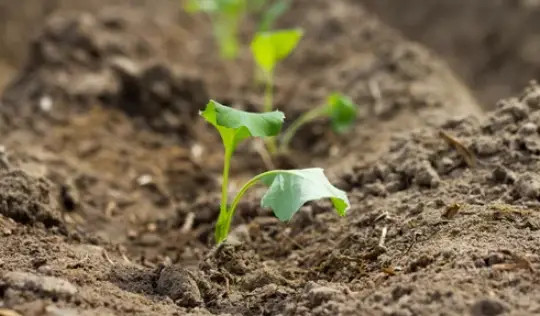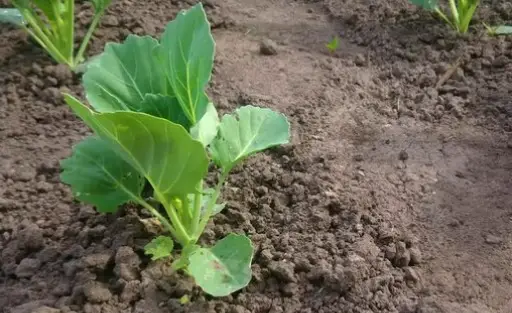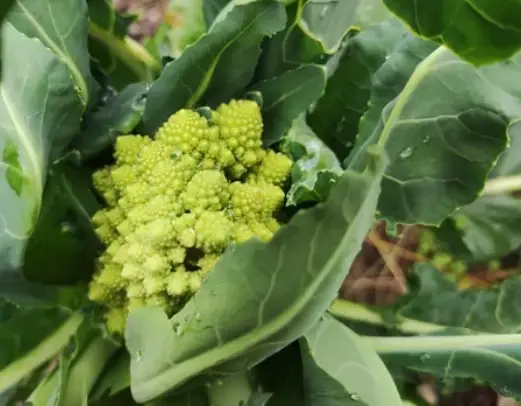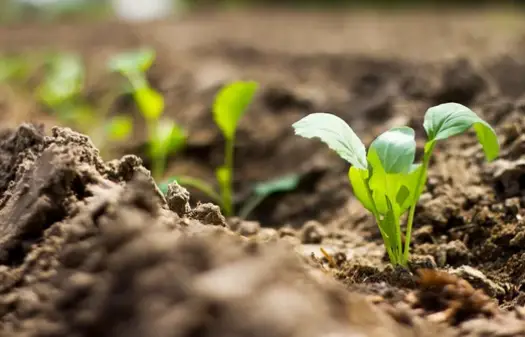Growing cauliflower in your garden can be a rewarding experience but only if done correctly.
One of the most crucial factors in growing a successful cauliflower crop is to plant the seeds at the right time.
The timing of planting cauliflower seeds is crucial to ensure that the seedlings have enough time to grow and mature before the hot summer weather arrives or the cold winter sets in.
In this post, we will provide you with all the information you need to know about when to plant cauliflower seeds, the ideal temperature for germination, the right soil conditions, and how to care for the seedlings.
With this knowledge, you will be able to successfully grow a bountiful cauliflower crop in your garden.
When to Plant Cauliflower Seeds

However, the first thing to consider when planning to plant cauliflower is the temperature. Cauliflower seeds should be planted when the soil temperature is between (60-65°F). This is because cauliflower seeds have a low germination rate when the soil temperature is below 60°F or above 70°F. If the soil temperature is too high, the seeds may not germinate at all.
Another factor to consider when planting cauliflower seeds is the timing. Cauliflower seeds should be planted about 6-8 weeks before the last frost date in the spring. This will give the seedlings enough time to grow and mature before the hot summer weather arrives. In the fall, cauliflower seeds should be planted about (10-12 weeks) before the first frost date. This will give the cauliflower plants enough time to grow and mature before the cold winter weather sets in.
When planting cauliflower seeds, it’s important to choose a sunny location with well-drained soil. Cauliflower plants prefer a soil pH of between 6.0-7.0. If the soil you have is too acidic, you can add lime to raise its pH level. It’s also important to make sure the soil is rich in organic matter, as this will provide the plants with the necessary nutrients for growth.
The seedlings should be spaced about 18-24 inches apart in the row. This will give the plants enough room to grow and mature. The rows should be spaced about 2-3 feet apart. Cauliflower plants need to be watered regularly, especially during dry spells, to ensure they have enough moisture to grow.
Cauliflower plants also require consistent moisture throughout the growing season. So, the soil should be kept consistently moist but not waterlogged. If the soil is too dry, the heads will not form properly. If the soil is too wet, the heads may rot.
Also, when you are planting cauliflower use fertilizers. Cauliflower plants need a steady supply of nutrients to grow and mature. A general-purpose fertilizer can be applied at planting time and again when the heads begin to form.
Caring for Cauliflower Seedlings

Once the cauliflower seeds have germinated and seedlings have emerged, it is important to provide the seedlings with proper care to ensure a healthy and productive crop. One of the most important things to remember when caring for cauliflower seedlings is to provide them with enough light. Cauliflower seedlings need at least 6-8 hours of sunlight per day. If the seedlings are not getting enough light, they will become spindly and weak.
Another important aspect of caring for cauliflower seedlings is to keep them well-watered. As mentioned earlier, the soil should be kept consistently moist but not waterlogged. Seedlings that do not get enough water will become stunted and may not produce a healthy head.
Thinning Out the Seedlings
As the seedlings grow, it will be necessary to thin them out. This means removing some of the seedlings so that the remaining ones have enough space to grow and mature. Seedlings should be thinned out when they have reached about 3-4 inches in height.
They should be spaced about 18-24 inches apart in the row. This will give the plants enough room to grow and mature. Seedlings that are too close together will compete for light, water, and nutrients, which will result in smaller heads.
Pest and Disease Control
Cauliflower plants are susceptible to a variety of pests and diseases. One of the most common pests that attack cauliflower plants is the aphid. Aphids can be controlled by using insecticidal soap or neem oil.
Another common pest that can attack cauliflower plants is the cabbage worm. Cabbage worms can be controlled by using Bacillus thuringiensis (Bt) or by handpicking the worms off the plants.
Cauliflower plants can also be affected by diseases such as clubroot and blackleg. Clubroot is caused by a soil-borne fungus that can cause the roots of the plant to become distorted and stunted. Blackleg is a bacterial disease that can cause the stem of the plant to rot. To prevent these diseases, it is important to practice good crop rotation and avoid planting cauliflower in the same location year after year.
Harvesting Cauliflower

Cauliflower heads are ready to be harvested when they are firm and have reached the desired size. The heads should be harvested before they begin to separate or “rice”. If the head is left on the plant too long, it will become tough and woody.
When harvesting cauliflower heads, use a sharp knife or scissors to cut the heads off the plants, leaving about an inch of stem attached. Be sure to handle the heads carefully to avoid bruising them.
Final Thoughts
If you want to plant cauliflower seeds it all depends on the temperature, timing, location, soil, and fertilization. The ideal temperature for cauliflower seed germination is between 60-65°F. Cauliflower seeds should be planted 6-8 weeks before the last frost date in the spring, or 10-12 weeks before the first frost date in the fall. The location should be sunny with well-drained soil and a pH of 6.0-7.0. The seedlings should be spaced 18-24 inches apart in the row, and the rows should be spaced 2-3 feet apart. The soil should be kept consistently moist and fertilized regularly for optimal growth and maturity of the cauliflower plant.
Also, Cauliflower is a cool-season vegetable that is mostly grown in the spring or fall seasons. Knowing when to plant cauliflower seeds, how to care for seedlings, and how to control pests and diseases are all important factors in ensuring a successful harvest. With proper care and attention, you can enjoy fresh, delicious cauliflower from your own garden.




